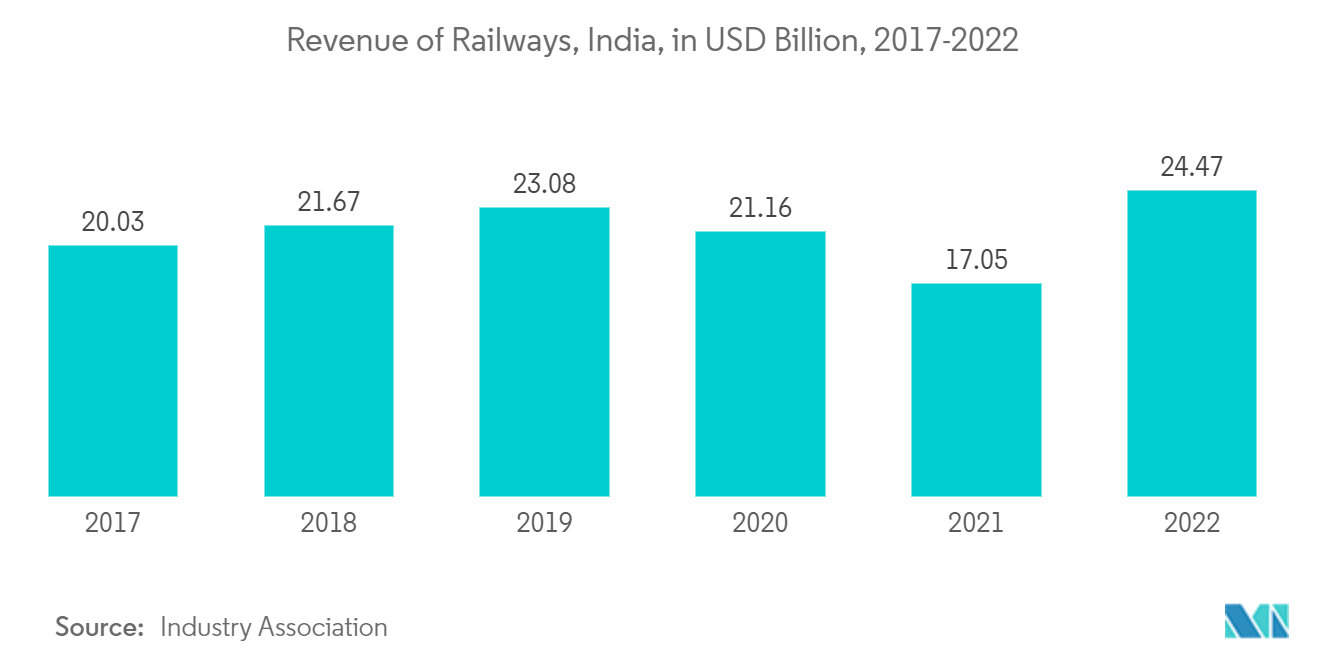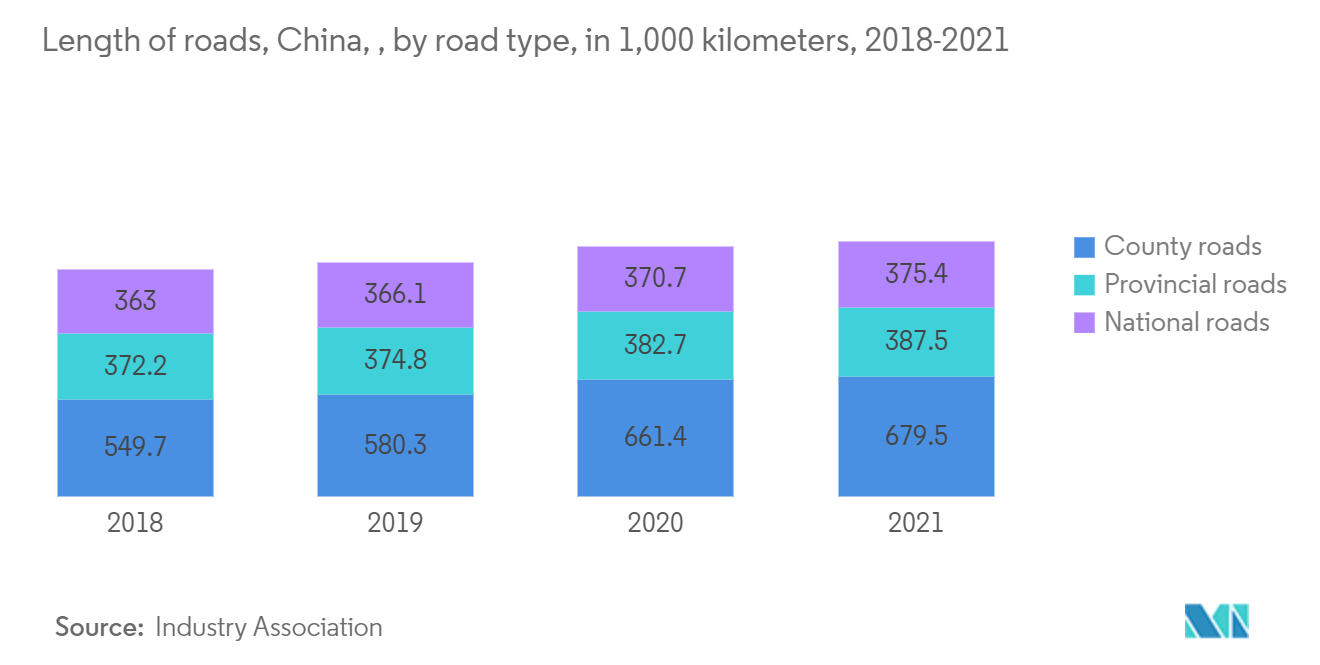Market Trends of Asia-Pacific Transportation Infrastructure Construction Industry
Government initiatives driving transport infrastructure market in India
- According to a government report, the road transport and highways sector has the most delayed projects (243), then railways (114), and then petroleum (89).243 of 826 projects are behind schedule in the road transport and highways sector. According to the most recent flash report on infrastructure projects for October 2022, 114 out of 173 projects in the railway sector has been delayed, while 89 out of 142 projects in the petroleum sector have been delayed. As many as 642 projects have been delayed from their original schedules, and 79 projects have reported additional delays from their previous month's completion date. 32 of these 79 projects have a cost of Rs 1,000 crore (USD 12.11 million) or more.
- India wants to have a $5 trillion economy by 2025, and building up its infrastructure is a key part of that plan. To boost the growth of the infrastructure sector, the government has launched the National Infrastructure Pipeline (NIP), in conjunction with other initiatives such as 'Make in India' and the production-linked incentives (PLI) scheme. Historically, more than 80% of infrastructure spending in the United States has gone toward transportation, electricity, water, and irrigation. In India, approximately 42% of the NIP projects are currently being implemented, implying that construction work is already underway. Another 19% are in the development stage, with a sizable 31% still in the conceptual stage. During the fiscal years 2020 to 2025, sectors such as energy (24%), roads (19%), urban (16%), and railways (13% each) will account for around 70% of the projected capital expenditure on infrastructure in India.
- The Delhi-Mumbai Industrial Corridor (DMIC) is the first project by the Indian government to build an industrial corridor. The organization in charge of carrying out the project, the Delhi-Mumbai Industrial Corridor Development Corporation (DMICDC), was set up in 2008. The total amount sanctioned for this program is approximately $2.4 billion. The program has taken on 11 industrial corridor projects, and a total of 30 projects will be developed in four phases by 2024-25. The National Industrial Corridor Development and Implementation Trust (NICDIT) works under the administrative control of the Department of Promotion of Industry and Internal Trade (DPIIT) to coordinate and integrate the development of all industrial corridors in various stages of development.

Boosting logistics sector and urban transportation driving the market
- Shippers are lowering operational costs by shifting their attention away from transportation and back-office functions. Because of the growing public-private partnership model and increased emphasis on logistics infrastructure, the roadways segment will account for the largest share in 2021. Over the forecast period, globalization and sustainable economic growth are expected to drive the growth of the airway's logistics mode. A sharp slowdown in global economic growth will weigh on the global construction industry in 2. This year is expected to be marked by low industry sentiment, low project activity levels, and postponement of investment decisions. In 2023, an increased emphasis on energy security will emerge as an increasingly important driver of global infrastructure investment.
- Asia and the Pacific are undergoing rapid demographic, technological, economic, and environmental transformations. These trends are intersecting with local circumstances in a highly diverse region, ranging from major industrial economies like the People's Republic of China to Pacific nations like Kiribati. The megatrends influencing transportation in the region are fairly obvious. However, their impact and relative priority will vary depending on location and context. Climate change will be the most important trend to consider for many countries. The appropriate policy and investment decision in response to a trend is determined by factors such as geography, existing infrastructure, institutional capacity, and the overall investment pipeline.

